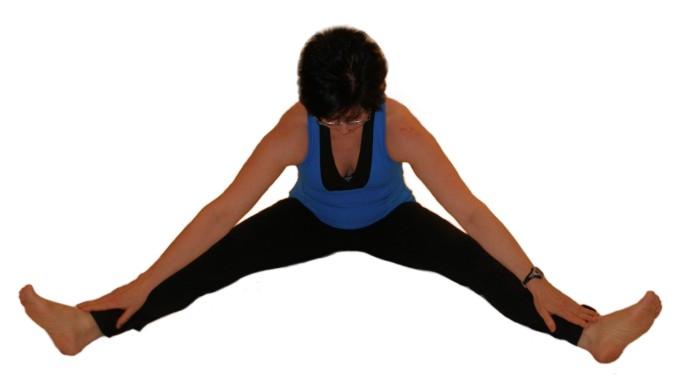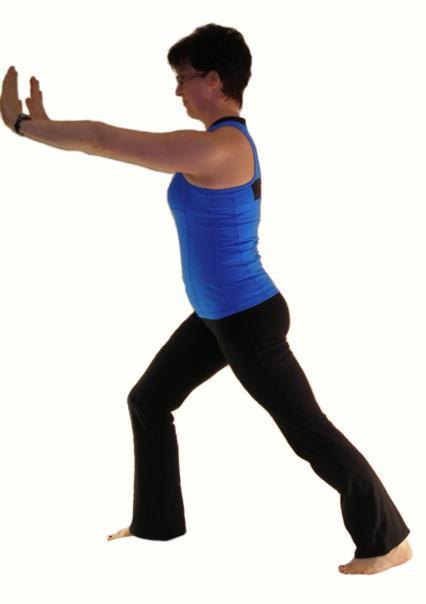Knee Stretching
Knee stretching should be done on a regular basis to maintain their mobility. Tightness can develop in cases of disuse, sedentary lifestyles, arthritis, and poor posture. While we can often function with reduced mobility, it is the pain associated with the muscle imbalances and joint dysfunction or irritation that brings people in to the physical therapist eventually. Stretching exercises as part of a regular exercise program can help prevent injuries and maintain painfree function.
Contents
Why
Should we do
Stretching for Knees?
What
are
the
Muscles that Cross the Knee?
Knee
Stretches and
Osteoarthritis
Knee
Stretches
How
can knee stretches prevent injury?
Why Should we do Stretching for Knees?
The knee acts as a large hinge joint as it becomes straighter. When collateral ligaments are looser as in the flexed position, a certain amount of rotation occurs of the tibia on the femur through the pull of the medial or lateral hamstrings. For optimal function of the knee we require a balance of the length of the muscles around it between flexors and extensors. We also need a balance in strength. When there is an imbalance it can predispose you to strains, ligament sprains, and joint wear.
What Muscles are we Stretching
Structures that cross the knee joint are as follows:
- Quadriceps femoris attaches to the patella which is in turn attached to the tibia
- Hamstring muscles, bicep femoris, semimembranosus and semitendinosus
- Long hip adductors, gracilis, sartorius
- Gastrocnemius
- Iliotibial band
Knee Stretches and Osteoarthritis
Exercise is a necessary part of any treatment plan for arthritis. The
type, intensity, and frequency of exercise you do will depend on the
type of arthritis you have and the condition of your joints. As part of
the inflammatory process the body lays down scar tissue. This scarring
creates adhesions around the joints, pain, and dysfunction. Because of
the pain, inactivity typically ensues leading to further stiffness and
weakness. To break this cycle you need to see your family physician
about methods to control the inflammation and your physical therapist
to prescribe an exercise program appropriate for your needs.
Knee stretches ares especially beneficial for
arthritic knees.
Although you cannot reverse the damage that has been done to the
cartilage you can reduce
the pain due to capsular tightness and painful adhesions that
are associated with arthritis.
By restoring mobility to the arthritic
knee you help normalize the mechanics and reduce the wear and tear that
accelerates the degenerative process. Dealing with osteoarthritis is a
balancing act between exercise and rest. Exercise too much or too
vigorously you can aggravate your pain; exercise too little, and
weakening and instability results, worsening joint wear and tear.
If you suffer from arthritis of the knees be sure to
have it
evaluated by your physical therapist for an appropriate set of
exercises to address stiffness, weakness, balance, and endurance.
Stretching for Knees
Quadriceps
The easiest way to stretch the quadriceps is in standing.
- Stand beside a chair or counter top so as to hold on with one hand if necessary to balance.
- Reach down and grab your right ankle. You can use the hand on the same side or the opposite side. Most people find using the opposite hand most comfortable because it allows the hip to stay in a comfortable position. If you are unable to reach your ankle you can loop a belt or towel around your right ankle and pull on that.
- Straighten your back, lift your chest up and pull your ankle back and up slowly.
- If you are able to bring your knee behind you as in the picture you can stretch rectus femoris as well
Hold this position for the appropriate time

Hamstrings
There are several ways to stretch the hamstrings. The way I usually tell patients is in standing so as to minimize strain on the lower back.
- Stand at the side of a bed/table
- Rest your straight leg on the table
- keep the knee straight and lean forward
Hold this
position for the appropriate
time

The standing
stretch is valid as an effective method of increasing hamstring
flexibility, but depends on pelvic positioning. If you are able to
maintain a straight lower back while performing this stretch it is
significantly more effective.
- To perform this stretch stand and face a chair or table.
- Keep your chest up and back straight.
- Bend forward at the hips until you feel a stretch in the back of your thigh.
- Hold this position for the appropriate time
For more
hamstring stretches see the page on Stretching
Hamstrings.

Long Hip Adductors
- Kneel onto your right knee and place your left foot in front of you to assume the lunge position.
- Slide your left foot out to the side and place both hands on the floor in front of you.
- Try to straighten the left knee and lean your body forward while relaxing your hips.
- Rocking the hips forward and back will change the pull slightly to get all muscles.

Long adductors can also be stretched in sitting. This stretch also
includes hamstrings biasing the medial hamstrings, semimembranosus and
semitendinosus.
- To stretch both sides simultaneously sit with your legs straight out in front of you with your back straight.
- Slowly work your legs apart as far as they will go.
- Hold this and relax for a few seconds.
- Now as you exhale bend forward at your hips until you feel more resistance.
- Be sure to keep your chest up and maintain a lumbar lordosis (normal inward curvature of the lower back)
- Hold this for the appropriate time.
- Most people will gain a benefit from 30 seconds.

Gastrocnemius
The part of the calf that originates from above the knee is the gastrocnemius muscles. It crosses both the knee and the ankle joints.
- Stand about three feet from a wall and put your right foot behind you ensuring your toes are facing forward
- Keep your heel on the ground and lean forward with your right knee straight
- Rotating the toes in and out slightly will target the medial and lateral parts of this muscle separately
- Hold this position for the appropriate
time

Iliotibial Band
The iliotibial band is a long thickening of the fascia on the outside of the thigh. It originates from the Ilium and inserts into the tibia. It receives muscular attachments at the hip and has slips into the patella so you can see how tightness in this structure could cause a whole slew of problems. Any good knee stretching program should include IT band stretches. For a more detailed discussion on the iliotibial band and more ways to stretch it see my page on The Iliotibial Band.
- To stretch the right iliotibial band in standing, stand with your right side facing a wall or leaning on the back of a chair.
- Put your right foot behind your left foot and point the toes of your right foot out about 45 degrees.
- Put your left hand on your left hip and while keeping your right leg straight, push your hip in toward the wall.
- A common mistake made when performing this stretch is to bend forward at the hips or to rotate the body.
- Make sure you remain upright and keep your torso perpendicular to the wall.
- Hold this position for the appropriate time.

How can stretching for knees prevent injuries
Proprioception
Joint position sense otherwise known as proprioception is important in
sports and knee function in that it is a contributor to joint
stability.
A study published in the British Journal of Sports Medicine used 39
healthy volunteers to measure joint position sense (proprioception) in
those individuals dominant knees.(1)
Results showed that a knee stretching program that included three
static stretches of 30 second duration
improved people's joint position sense. Knee stretching used in the
study targeted the quadriceps, hamstring and adductors.
Improved Flexibility
Improved flexibility has always been considered important in the
prevention of injuries and there are several studies that have shown
this to be the case. (2,3,4)
A study published in The Journal of Athletic Training analyzed the
incidence of lower extremity strains in players of a Division 3 college
football team over 1994-95.(5) The addition of a knee stretching
program in
1995 resulted in significant reduction in strains that required minimum
1 day of play lost in 1995 over 1994.
1. F
Ghaffarinejad, S
Taghizadeh, F Mohammadi Effect of static stretching of
muscles surrounding the knee on knee joint position sense. Br J Sports
Med 2007;41:684-687doi:10.1136/bjsm. 2006.032425
2. Knapik JJ, Bauman CL, Jones BH, Harris JM, Vaughan L. Preseason
strength and flexibility imbalances associated with athletic injuries
in female collegiate athletes. Am J Sports Med. 1991;19:76-81.
3. Jonhagen S, Nemeth G, Eriksson E. Hamstring injuries in sprinters:
the role of concentric and eccentric hamstring muscle strength and
flexibility. Am J Sports Med. 1994;22:262-266.
4. Worrell TW, Perrin DH, Gansneder BM, Gieck JH. Comparison of
isokinetic strength and flexibility measures between hamstring injured
and noninjured athletes. J Orthop Sports Phys Ther. 1991;13:118-125.
5. KM Cross, MEd, ATC; TW Worrell, EdD, PT, ATC Effects of a
Static Stretching Program on the Incidence of Lower Extremity
Musculotendinous Strains knee stretching. Journal of Athletic
Training 1999;34(1):11-14.